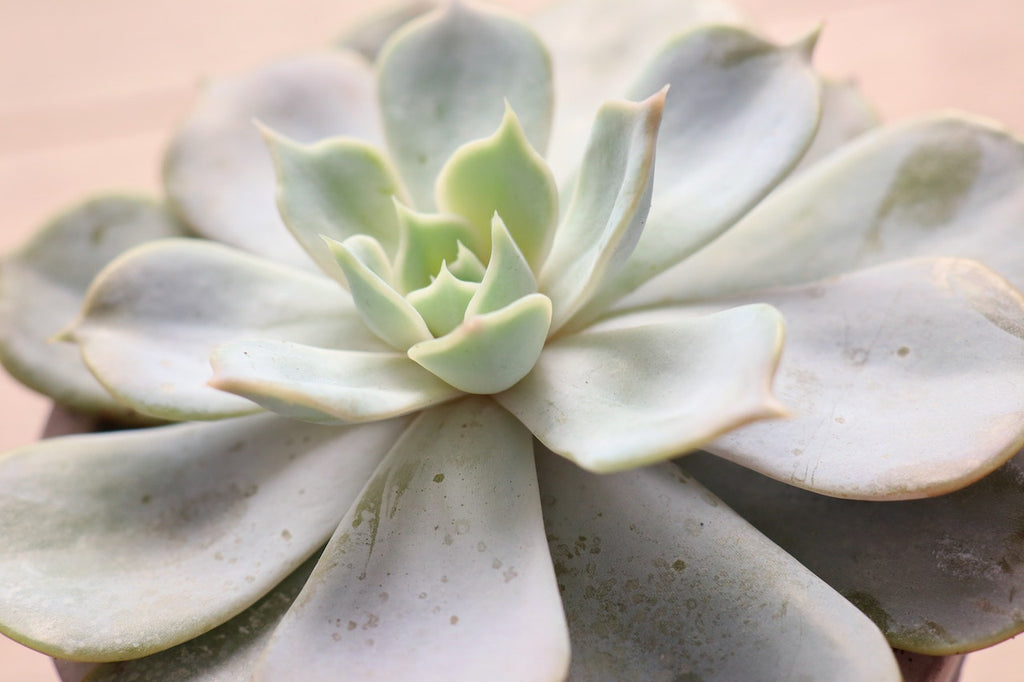Echeveria Succulent Care
by Succulent MarketFeb 22, 2021

Echeverias are one of the most popular succulents in homes and offices across the country. Their gorgeous shape and wide range of colors are very attractive, making them the perfect plant for any occasion.
This guide will explain all you need to know about Echeveria care, no matter if you’re looking to buy your first one or expand your existing arrangement.
Light
Echeveria requires lots of sunlight to thrive. Ensure that it gets between four and five hours of sunlight a day. If it doesn’t, it will get leggy and stretch out towards the source of the light. It’s also unlikely that it will ever flower if it doesn’t get enough light either.
Soil
Echeveria succulents, like others, need well-draining soil to prevent the plant from rotting from the roots up.
Standard cactus potting mixes work well enough for Echeverias. You can pick them up from most nurseries and garden centers. On the other hand, you can create your own. Just combine three parts of regular potting soil with two parts coarse sand and one part perlite.
Water
Watering is very important. Echeverias don’t need much water to survive. In fact, it’s better that you underwater them as overwatering can lead to root rot.
The best way to water Echeveria is to wait until the soil is completely dry before watering again. Make sure to water directly on to soil until it starts seeping out of the drainage holes.
Temperature And Humidity
Echeveria thrives in hot arid conditions. It doesn’t tolerate the cold well, while high humidity can lead to rotting. Room temperature is plenty warm enough for Echeverias as long as it’s kept away from the bathroom or laundry room where the humidity tends to be higher.
Fertilizer
This is not a must-have for growing Echeveria as it’s used to growing in soil lacking in nutrients. That said, fertilizing in the early spring can boost its growth but do so with caution. Dilute it at least twice more than you would for fertilizing other plants.
Potting and Repotting
Echeveria should only be repotted once it has outgrown its previous container. Any other repotting is unnecessary for its growth. Start by removing any excess soil from its roots, then plant it in the new pot.
The best time to repot Echeverias is in the spring as this is when it enters its active growth period.
Propagation
Propagating Echeveria is just as fun as it is easy to expand your succulent arrangement. There are two methods of propagation: separation and via leaf cuttings.
For the separation method, healthy Echeverias produce offsets from the main stem that can be removed from the mother plant and replanted in a separate pot to grow a brand new plant.
For the leaf cutting method, start by gently wiggling off a leaf from the main stem (being careful not to shake off any more than you need.) Place this leaf on a pot of soil and set it in a bright location. Avoid direct sunlight, however, as this can burn and kill the leaf. Don’t water the leaf for a few weeks either, during which it will start to grow its own roots.
Begin watering the baby plant as you would a mature succulent once it has developed roots. A small rosette will appear after a month at the end of the leaf. This rosette is important for providing the new plant with nutrients and energy so don’t remove it.
As the new plant becomes more independent, the old leaf will die.
Varieties Of Echeveria
There is a very wide range of Echeveria succulents. Some of the most popular varieties include the Black Prince, the Perle Von Nurnberg, the Violet Queen and the Painted Echeveria nodulosa.
Pet And Family Friendliness
Good news for pet owners and families with children - Echeveria succulents are safe for kids, cats and dogs as they do not contain toxic compounds. Nevertheless, it’s still recommended that they aren’t eaten.
Pruning
Generally speaking, Echeveria succulents do not require regular pruning. That said, if your plant does elongate due to a lack of sunlight, you may be required to prune it to keep it healthy and looking at its best.
